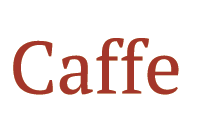| import os | |
| from optparse import OptionParser | |
| import cPickle | |
| import skimage | |
| import numpy as np | |
| from scipy import misc | |
| from distutils.dir_util import mkpath | |
| def loadImage(imgpath): | |
| try: |
With the availability of huge amount of data for research and powerfull machines to run your code on, Machine Learning and Neural Networks is gaining their foot again and impacting us more than ever in our everyday lives. With huge players like Google opensourcing part of their Machine Learning systems like the TensorFlow software library for numerical computation, there are many options for someone interested in starting off with Machine Learning/Neural Nets to choose from. Caffe, a deep learning framework developed by the Berkeley Vision and Learning Center (BVLC) and its contributors, comes to the play with a fresh cup of coffee.
The following section is divided in to two parts. Caffe's documentation suggest
| import numpy as np | |
| def makeGaussian(size, fwhm = 3, center=None): | |
| """ Make a square gaussian kernel. | |
| size is the length of a side of the square | |
| fwhm is full-width-half-maximum, which | |
| can be thought of as an effective radius. | |
| """ |
| name | caffemodel | caffemodel_url | license | sha1 | caffe_commit |
|---|---|---|---|---|---|
Vanilla CNN Model |
vanillaCNN.caffemodel |
unrestricted |
b5e34ce75d078025e07452cb47e65d198fe27912 |
9c9f94e18a8909580a6b94c44dbb1e46f0ee8eb8 |
Implementation of the Vanilla CNN described in the paper: Yue Wu and Tal Hassner, "Facial Landmark Detection with Tweaked Convolutional Neural Networks", arXiv preprint arXiv:1511.04031, 12 Nov. 2015. See project page for more information about this project.
| #!/usr/bin/env python | |
| import numpy | |
| from numpy.distutils.system_info import get_info | |
| import sys | |
| import timeit | |
| print("version: %s" % numpy.__version__) | |
| print("maxint: %i\n" % sys.maxsize) | |
| info = get_info('blas_opt') |
| import os | |
| import numpy as np | |
| import scipy.ndimage as ndimage | |
| import matplotlib | |
| import matplotlib.pyplot as plt | |
| def frac_eq_to(image, value=0): | |
| return (image == value).sum() / float(np.prod(image.shape)) | |
| def extract_patches(image, patchshape, overlap_allowed=0.5, cropvalue=None, |
